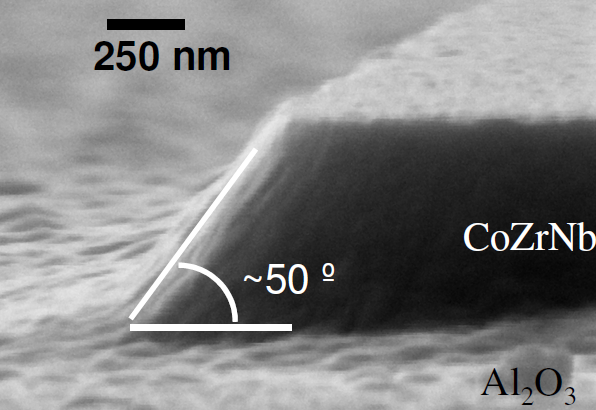Ion-beam milling
Lithography & Patterning (Patterning, replication, and sample navigation)
Ion beam milling is performed with a broad beam, RF-excited ion source of relatively large diameter, equipped with an ion accelerator. The highly directional beams of charged particles are directed at a substrate with a predefined hard mask in a high vacuum chamber. A neutralizer is used to neutralize the space charge by providing electrons, assuring optimum etching of dielectric films, not only of metals. To control the etched sidewall profile and to assure radial uniformity during the etching the sample can be tilted with respect to the beam, while it rotates, ensuring axisymmetry. Although the etching rates can be enhanced by use of reactive gases, usually inert gases are used and most materials can be effectively milled with this technique. The technique is highly anisotropic owing to the directionality of the ions. Ion beam milling is the technique of choice for materials that cannot be etched by reactive ion etching or when steep sidewalls are wanted. Typical available gases are Ar, O2, N2, Xe. Often in the same system ion beam deposition of metals and dielectrics can also be performed (typical structures are spin valves and tunnel junctions, passivation layers). Examples of target materials are: NiFe, MnIr, CoFe, Ta, Cu, Al, Ru, NiFeCr, Cr, Ti, Fe, Co, CoFeB, CoZrNb, MnCrPt, Al2O3, Zr, among others. Ion beam deposition can also used for the fabrication of metal oxides by reactive deposition (NiO, CrOx, TiOx, Fe3O4).


